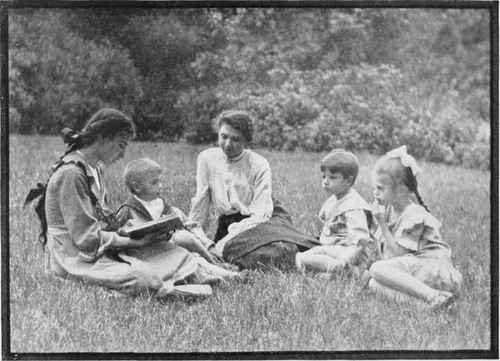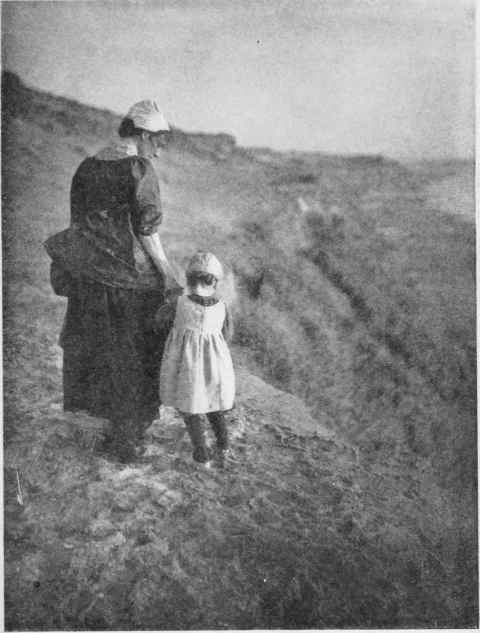Part I. Figures In Landscape. Part 2
Description
This section is from the book "Complete Self-Instructing Library Of Practical Photography", by J. B. Schriever. Also available from Amazon: Complete Self-Instructing Library Of Practical Photography.
Part I. Figures In Landscape. Part 2
289. Narrow Angle Lens The Best
Narrow Angle Lens The Best. The most common fault which presents itself in the handling of the foreground is derived from the use of a lens of too wide an angle, so that too much of the immediate foreground is included. The. distance is thrown back too far, and when the print is made it requires a considerable amount of trimming away of the foreground. Thus, a long narrow picture seems more artistic, because of its shape; whereas its pleasing effect is chiefly due to its giving the impression of a narrow angle of view. The practical solution is the use of a long focus lens so as to secure the same effect on a larger scale.
290. Proper Focal Length Of Lens
Proper Focal Length Of Lens. If you are using a single lens on a 31/4 x 4 1/4 or 4 x 5 plate, it should have a focal length of not less than 6 inches. If you are using the rapid rectilinear lens for this same size plate, the focal length can be 5 or even 4 1/2 inches, as this can be increased to approximately 10 and 9 inches, respectively, by removing the front combination. Lenses of this type, therefore, combine the greatest advantages of wide and narrow angle.

"FAIRY TALES" Study No. 14 - See Page 309 By Edmund L. Sanderson

THE EDGE OF THE CLIFF Study No. 15 - See Page 311 By Myra A. Wiggins.
291. Caution
Caution. You must not forget that employing the single combination of a lens, thus doubling the focal length, changes the value of the stop (or diaphragm) and requires a proportionate increase in the exposure.
292. Focusing
Focusing. A second difficulty which is met with in the composition of the foreground is the inclusion of detail. With landscape painters this necessarily involves an intimate knowledge of ground and herbage structure, and a corresponding ability for accurate drawing, but the photographer is spared this knowledge, for the lens gives him the necessary accuracy of form. But, though this difficulty is removed, others equally as great present themselves and take its place; for if you will focus the foreground the distance is thrown out of focus, and if you overcome this by stopping down the lens, you will lose atmosphere and perspective. One of two things must, therefore, be decided: Is the foreground or the distance of most importance?
293. This you must decide for yourself when you arrange the subject upon the ground-glass screen. If the beauty of the scene depends upon the delicate features in the foreground, the descending curve and uneven shadows of the soil, or the beauties of waving flowers and grass, then the foreground contains the principal point of interest, and the camera should be placed low and the focusing so accomplished that enough detail is given to the objects nearest the camera, without destroying the alternating and broken lines of the middle and far distances.
294. On the other hand, if the foreground contains nothing of interest, and the motive of the picture is in the distant detail, then place your camera at a higher view-point and use a lens of narrow angle.
Continue to:


